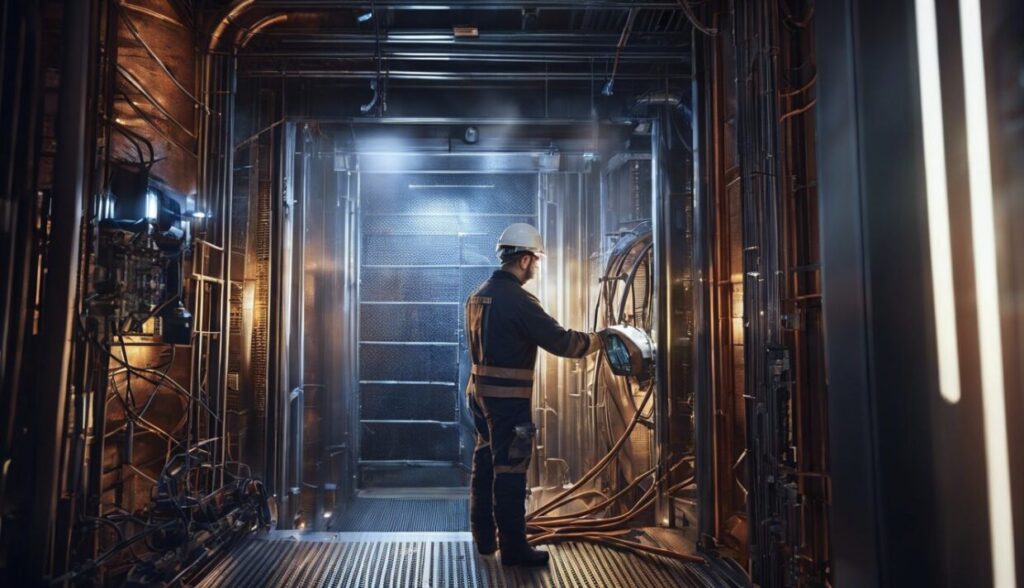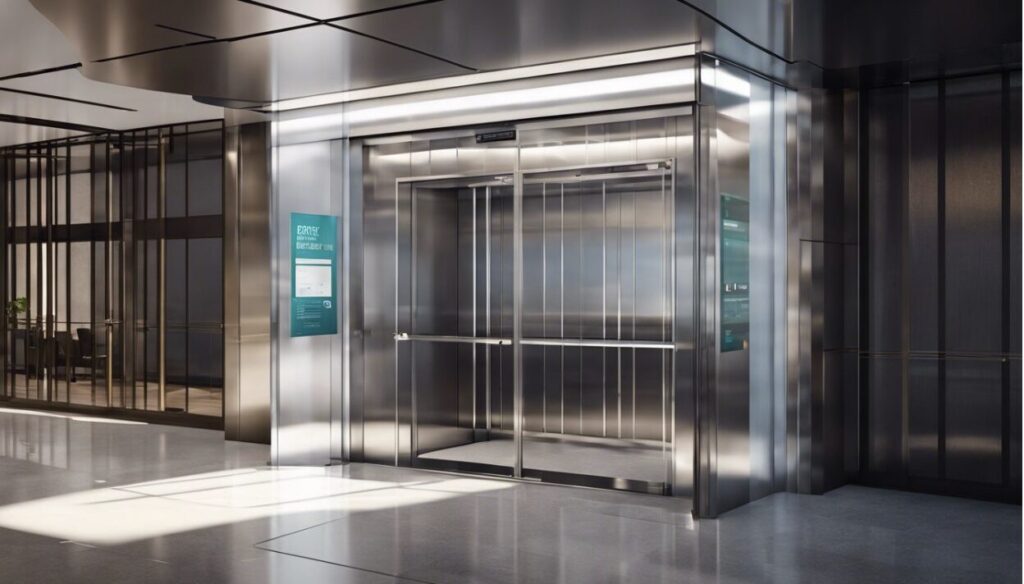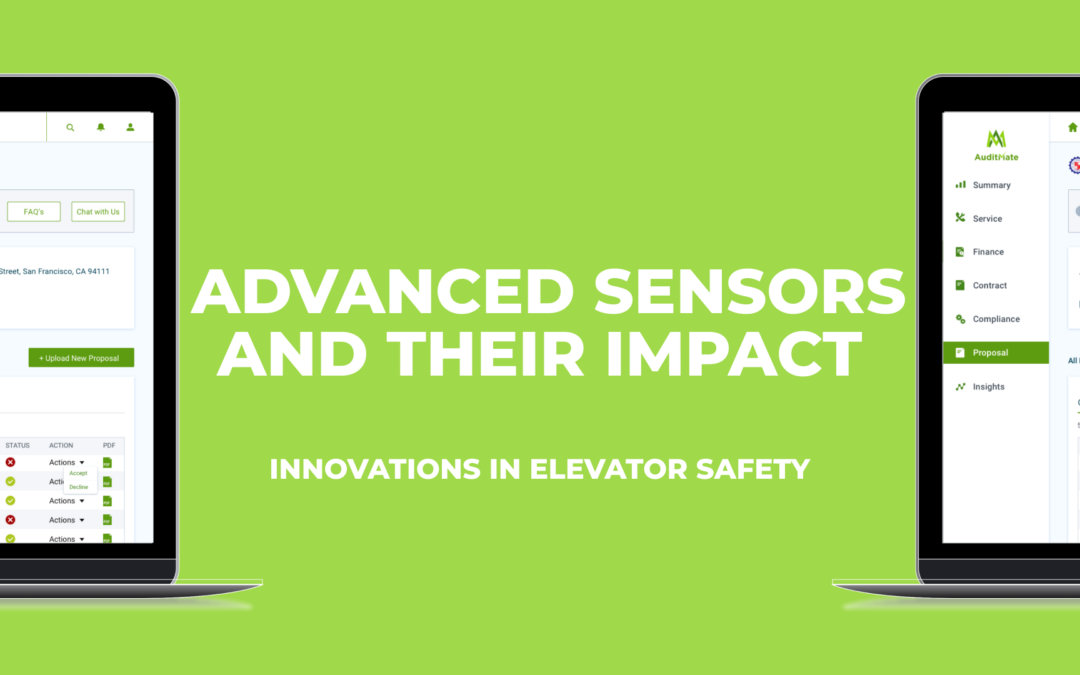Improved elevator safety is crucial in modern buildings and facilities. Many people often overlook the complexity involved in ensuring safe and efficient vertical transportation. But with recent advancements, elevators are safer than ever—thanks to cutting-edge sensor technology that continuously monitors performance in real-time, preventing accidents before they happen.

Drawing from extensive experience with building management systems, the transformative impact of these innovations on user safety and operational efficiency has been observed firsthand. This blog will explore the latest breakthroughs in elevator sensors.
The Importance of Elevator Safety

Elevator safety is crucial for everyone who uses them daily. Proper measures prevent accidents and save lives.
Regulations and codes
Building owners must follow strict safety regulations and building codes for elevators. These codes set standards for design, construction, installation, and maintenance. Regular inspections ensure the equipment is safe to use.
Many rules cover every detail—from elevator operation procedures to repair protocols. Inspectors check elevators often to spot problems early. This keeps people safe as they ride up and down every day.
Adhering to elevator safety regulations is crucial for preventing accidents and ensuring reliability.
Common hazards and prevention
Common hazards can make elevators dangerous. Preventive measures keep them safe and reliable.
- Overuse
Overused elevators may break down more often. Installing sensors helps to monitor usage and schedule timely maintenance. - Lack of Ventilation
Elevators without proper airflow cause discomfort. Ventilation systems ensure fresh air circulates. - Mechanical Faults
Mechanical failures like broken cables can be catastrophic. Regular inspections catch these issues early on. - Electrical Malfunctions
Power outages or faulty wiring pose serious threats. Routine checks prevent electrical problems and ensure smooth operation. - Safety Precautions
Safety features such as backup brakes and emergency phones are essential. Checking these features regularly maintains safety. - Control Panel Faults
Malfunctioning control panels lead to erratic behavior of elevators. Keeping the panels in top condition prevents operational glitches. - Overcrowding Risks
Too many people in an elevator can cause it to fail. Clear signage helps regulate the number of passengers per ride. - Routine Servicing
Scheduled maintenance ensures all parts work correctly and safely. It also extends the life of the elevator system.
Hazards exist, but prevention makes elevators safer for everyone who uses them every day.
Training and certification
Technicians need proper training to ensure elevator safety. They must know the latest Safety Code for Elevators and Escalators, ASME A17.1. This helps them handle systems and equipment correctly.
Certification proves that these workers have learned important skills.
Workers must pass tests to get certified. These tests cover safety standards, inspection procedures, and technical knowledge about elevators. Certified technicians can spot problems early using advanced inspection tools, making elevators safer for everyone.
Regular maintenance ensures everything works well… which leads us to regular maintenance as a critical part of keeping elevators safe every day!
Regular maintenance
Regular maintenance keeps elevators safe and reliable. It helps spot problems early, reducing the risk of accidents and breakdowns. Lift maintenance by specialized technicians ensures everything runs smoothly.
Routine servicing boosts elevator efficiency and longevity. Regular checks improve performance, making rides smoother for everyone. Safety inspections follow safety regulations to guarantee secure operation.
Proper maintenance is essential for building trust and ensuring passenger safety.
Latest Innovations in Elevator Technology

Intelligent elevator dispatch
Intelligent elevator dispatch uses advanced technology to make elevators smarter and more efficient. This system groups passengers going to the same floor together, reducing wait times and energy use.
Building managers can optimize passenger traffic, leading to smoother operations.
Hightech features improve safety and convenience for everyone. The smart system learns from past usage patterns through AI-powered predictive maintenance, ensuring each ride is as smooth as possible.
This makes buildings safer while enhancing the daily experience for residents and workers alike.
Energy-efficient systems
Intelligent elevator dispatch is improving how we move between floors. Now, let’s talk about energy-efficient systems. These systems are eco-friendly and save money over time. Traction elevators use less energy than older models.
They are also more compact and efficient.
Advanced control systems in these elevators can save up to 5% more energy compared to basic ones. Many modern elevators come with regenerative drive systems that reuse energy during operation, making them even greener for facility managers. These energy-efficient elevators are an ideal choice as they are environmentally friendly and reduce operating costs. .
AI-powered predictive maintenance
AI-powered predictive maintenance uses advanced technology to keep elevators running smoothly. It employs machine learning models and motion sensors to spot issues before they become bigger problems.
This helps in detecting anomalies in elevator movement patterns, ensuring that any potential faults are fixed proactively.
This type of maintenance leads to significant cost savings and better user satisfaction. Building owners won’t have to deal with as many unexpected breakdowns or expensive repairs.
The system optimizes the lifespan of elevator equipment, making operations more efficient and reliable.
High-speed elevators
High-speed elevators are a cutting-edge innovation in modern elevator technology. These rapid elevators move faster and more efficiently, reducing travel time for building occupants.
They use advanced sensors to monitor real-time conditions, ensuring both safety and performance.
Advanced elevator technology includes smart cabin sensors that detect motion and force within the lift. These high-performance systems also feature energy-efficient designs, which save power while operating at top speeds.
Facility executives can rely on these quick elevators to provide smooth rides in high-rise buildings.
Advanced Sensors in Elevators
These sensors keep track of how elevators move and work, ensuring they are safe. They use smart tech to detect problems before they happen.
Real-time monitoring
Elevators with real-time monitoring use advanced sensors to keep track of their performance. These sensors gather data continuously, alerting managers instantly if something goes wrong.
This means any issues can be fixed quickly, reducing downtime.
With IoT-enabled systems, these sensors provide smart diagnostics and condition updates in real time. Building owners and facility executives get detailed reports on elevator usage and potential problems right away.
This boosts security measures by tracking movements effectively, making the whole system safer for everyone.
Machine learning algorithms
Machine learning algorithms can make elevators smarter and safer. They analyze data from sensor technology to predict and prevent problems before they happen. For example, these algorithms can study how often an elevator is used.
Then, they schedule maintenance only when it’s really needed, saving time and money.
Smart elevators also use these advanced sensors for demand forecasting. This means the elevator “learns” busy times throughout the day and adjusts its operation for better performance.
It leads to shorter wait times and smoother rides for everyone… making buildings more efficient overall.
Next up: smart cabin sensors
Smart cabin sensors
Smart cabin sensors make elevators smarter and safer. They use advanced technology to detect the number of people in a cabin, ensuring it never gets overloaded. This helps prevent accidents and keeps everyone safe.
Otis ONE is a great example of this innovation. It monitors elevator health 24/7 with these smart sensors. The system checks for any issues early, so repairs can happen before problems arise.
This ensures smoother rides and fewer breakdowns.
Biometrics and voice recognition
Biometric technology makes elevators smarter. Elevators can now identify people by their face, fingerprints, or eyes. This helps with security and keeps the building safe. Face recognition scans a person’s features to allow access.
Fingerprint scanning checks unique patterns on fingertips for identification.
Voice recognition is another key feature. It lets users control the elevator with voice commands. It’s very useful for those who have their hands full or disabilities. Integrated sensors make sure the system recognizes voices correctly, enhancing safety and ease of use in busy buildings.
Virus mitigation
Advanced sensors in elevators can detect the presence of viruses. They help control contamination by monitoring air quality and airborne transmission. Smart cabin sensors check for harmful particles, keeping the elevator safe to use.
Ultraviolet disinfection kills germs on surfaces, reducing virus spread.
Touchless technology like holographic buttons prevents surface contact with potential contaminants. Air purifiers and ventilation systems disperse droplets effectively, ensuring cleaner air inside the elevator cabin.
These innovations make elevators much safer places during viral outbreaks or pandemics.
Impact on Elevator Safety
Elevators are getting safer with new sensor technology. These sensors help to prevent accidents and ensure smooth rides for everyone.
Improved performance and reliability
Advanced sensors boost elevator performance. These sensors detect issues early and prevent breakdowns. They use machine learning to predict problems before they occur, ensuring smooth rides.
Real-time monitoring helps maintain reliability. IoT in elevators sends real-time data to maintenance teams. This allows quick fixes and reduces downtime significantly… keeping buildings operational without long waits for repairs.
Increased safety features
Modern elevators now use advanced sensors to boost passenger safety. Door sensors can spot obstructions and reopen doors if needed, preventing accidents. Emergency braking systems add another layer of protection, stopping the elevator safely during emergencies.
High-rise buildings benefit from these upgrades too. Fire-resistant materials in the cabins protect passengers in case of fire. Moreover, virus mitigation technologies ensure a healthier environment by detecting and controlling potential health risks inside the cabin.
These features significantly enhance security for everyone using the elevator.
Enhanced accessibility
Elevators with advanced sensors make buildings more accessible for everyone. Outdoor elevators help people with mobility challenges move around easily. These lifts are sturdy and safe, even in tough weather.
Platform lift technology is another great innovation. It improves senior mobility by providing easy-to-use controls and space-saving designs. This makes buildings friendlier for older adults while keeping them safe.
Sustainable solutions
Modern elevator systems offer more than just accessibility. They also embrace ecofriendly practices and sustainable solutions.
Elevator manufacturers now use recycled materials. This reduces waste and saves natural resources. Companies like KONE focus on energy conservation with high-speed, energy-efficient elevators.
Regenerative drives in these elevators help save power and promote sustainability.
The growing urban population needs environmentally friendly vertical transportation too. Sustainable materials and green technology ensure that new buildings meet this demand while conserving the environment.
Conclusion
Innovative sensors have transformed elevator safety. Advanced systems now monitor elevators in real-time, boosting performance and reliability. These sensors also enhance accessibility for everyone.
They offer sustainable solutions for modern buildings, ensuring safe vertical transportation.

Frequently Asked Questions | AuditMate
FAQs
1. What are advanced sensors in elevators?
Advanced sensors in elevators detect movement, weight, and door positions.
2. How do these sensors improve safety?
These sensors help prevent accidents by detecting problems early.
3. Can old elevators be upgraded with new sensors?
Yes, old elevators can often be fitted with new sensor technology.
4. Are advanced elevator sensors expensive to install?
The cost of installing advanced sensors varies based on the system and building needs.
5. Do all buildings need advanced elevator sensors?
Not all buildings need them, but they greatly enhance safety where installed.

